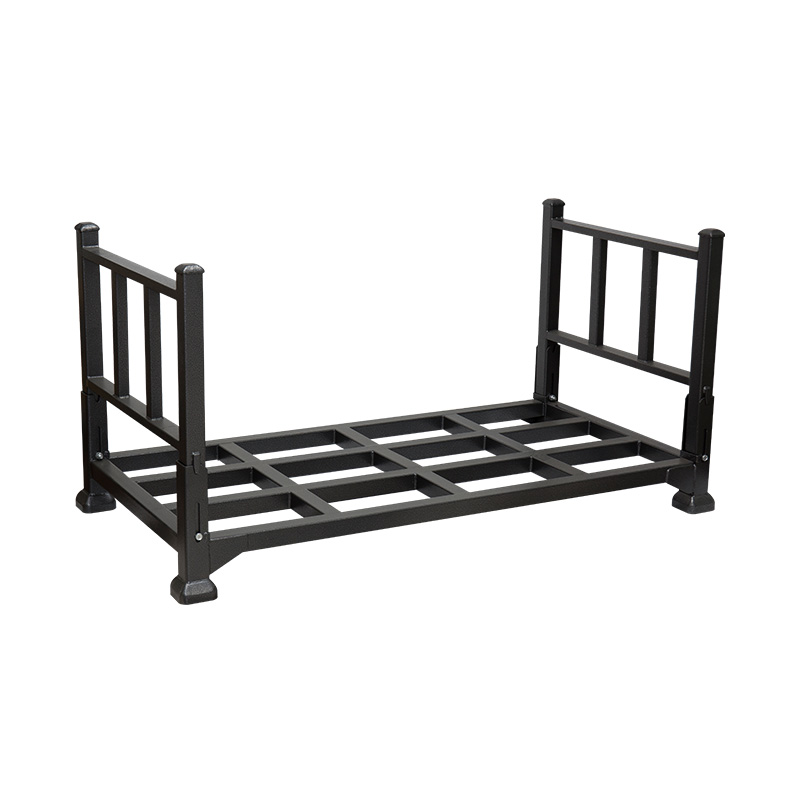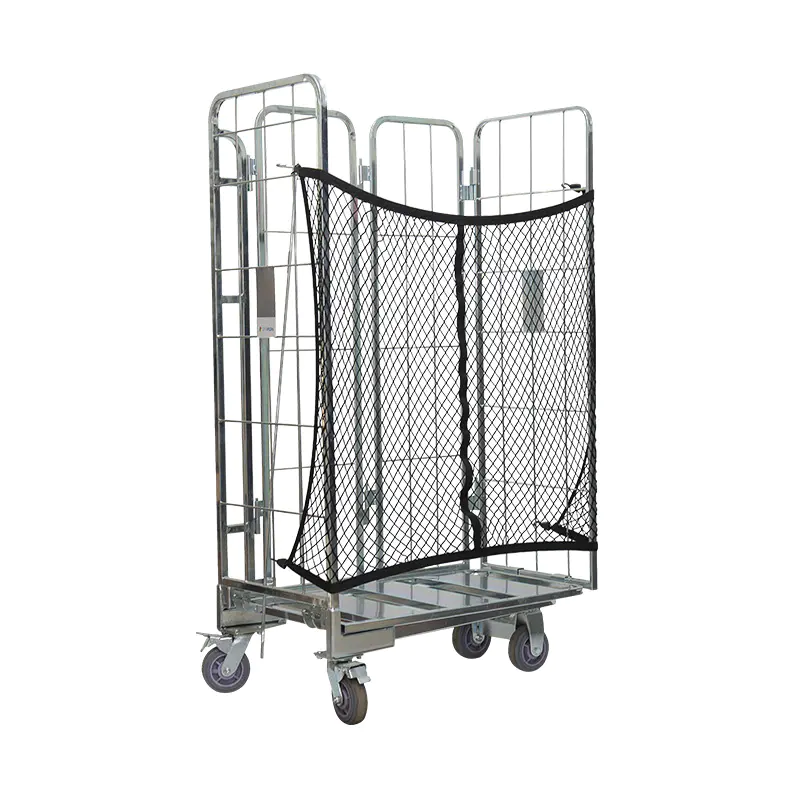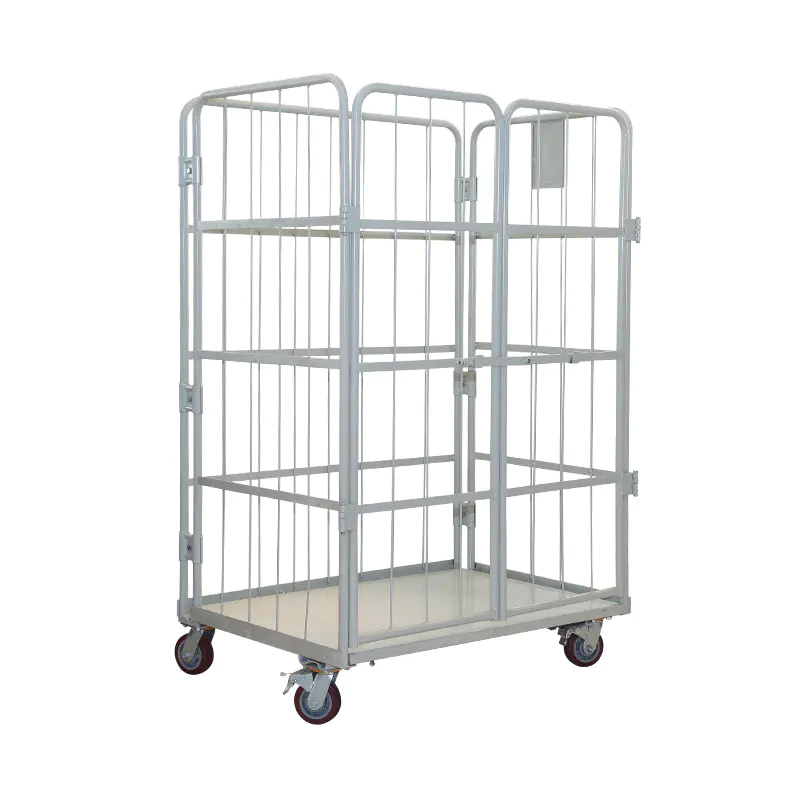Don't hesitate to send a message
Web Menu
Product Search
Exit Menu
Discussion on the key issues of production technology and quality control of warehouse storage mesh pallet cages
What are the key control points in the welding process of warehouse storage mesh pallet cages?
In the production process of warehouse storage mesh pallet cages, welding process is the key link to determine the structural strength and stability of the pallet cage. Its quality directly affects the safety and service life of the pallet cage in storage operations. To ensure the quality of welding, it is necessary to grasp the following key control points.
The first is the selection and management of welding materials. The quality of welding materials directly affects the performance of the weld. Matching welding rods, welding wires and other welding materials should be selected according to the material and performance of the steel used in the pallet cage. For example, for high-strength steel, welding materials with corresponding high-strength grades should be selected to ensure that the strength of the weld is consistent with that of the parent material. At the same time, the storage environment of welding materials should be strictly managed to avoid moisture, rust and other conditions that affect their performance. Welding materials should be stored in a dry and ventilated warehouse, and should be dried according to regulations before use to remove moisture and prevent defects such as pores in the weld.
Secondly, the commissioning and maintenance of welding equipment is crucial. Different types of welding equipment are suitable for different welding processes and materials. It is necessary to select appropriate equipment according to actual production needs and conduct precise commissioning before use. Taking carbon dioxide gas shielded welding as an example, it is necessary to accurately adjust parameters such as welding current, voltage, and gas flow to ensure a stable welding process. At the same time, regularly maintain the welding equipment, check the circuit, gas circuit, wire feeding system and other components of the equipment, and promptly discover and solve potential problems to avoid unstable welding quality due to equipment failure.
Furthermore, the control of welding parameters is the core of ensuring welding quality. Parameters such as welding current, welding speed, and arc voltage are interrelated and influence each other, and need to be reasonably matched. If the welding current is too large, it will cause problems such as weld undercut and burn-through; if the current is too small, defects such as incomplete penetration and slag inclusion may occur. If the welding speed is too fast, the weld is prone to poor fusion; if the speed is too slow, the weld will be too high and deformed too much. Therefore, the optimal welding parameters need to be determined through process tests before production, and they need to be strictly controlled during the production process to ensure the quality consistency of each weld.
In addition, the skill level and operating specifications of welding operators should not be ignored. Welding is a job with high technical requirements. Operators need to undergo professional training and master welding processes and operating skills. During the welding process, it is necessary to strictly abide by the operating procedures, maintain the correct welding posture and angle, and ensure the appearance quality and internal strength of the weld. At the same time, strengthen the quality awareness education of operators, make them realize the importance of welding quality to the overall performance of the pallet cage, take the initiative to do self-inspection, and promptly discover and correct problems in the welding process.
Finally, quality inspection after welding is the last line of defense to control welding quality. Visual inspection, non-destructive testing (such as ultrasonic testing, X-ray testing, etc.) and other methods are used to conduct a comprehensive inspection of the appearance and internal defects of the weld. Visual inspection mainly checks the weld's shape, size, surface pores, cracks, etc.; non-destructive testing can detect whether there are defects such as incomplete penetration, slag inclusions, cracks, etc. inside the weld. For unqualified welds, they need to be repaired in time and re-inspected until they are qualified.
How does the surface treatment process (such as galvanizing, spraying) of warehouse storage mesh pallet cage affect the product life?
During the use of warehouse storage mesh pallet cages, they will be affected by various environmental factors, such as humid air, corrosive substances, etc., which are prone to rust and corrosion, thus shortening the product life. Surface treatment processes (such as galvanizing and plastic spraying) can effectively improve the corrosion resistance and wear resistance of pallet cages, and play a key role in extending product life.
Galvanizing is a widely used surface treatment method, which is mainly divided into hot-dip galvanizing and electro-galvanizing. Hot-dip galvanizing is to immerse the pallet cage in molten zinc liquid so that the zinc layer and the steel surface form a solid alloy layer and a pure zinc layer. The zinc layer formed by this process is thicker, generally up to 60-80 microns, and has excellent corrosion resistance. The zinc layer will form a dense zinc oxide film in the air, which can effectively prevent oxygen and moisture from contacting the steel, thereby preventing the steel from rusting. Even if the zinc layer is partially damaged, the zinc layer can protect the steel from corrosion through its own sacrificial anode protection. Therefore, the service life of the pallet cage treated with hot-dip galvanizing can reach more than 10 years, or even longer, in a general storage environment. Electro-galvanizing is to deposit a layer of zinc layer on the surface of the pallet cage through the principle of electrolysis. The zinc layer is relatively thin, generally about 10-20 microns, and its corrosion resistance is slightly worse than that of hot-dip galvanizing, but the cost is lower. It is suitable for occasions where the corrosion resistance requirements are not particularly high. Under normal use conditions, the service life can reach 5-8 years.
The spraying process is to attach plastic powder to the surface of the pallet cage by electrostatic spraying, and then form a layer of plastic coating after high temperature curing. This coating has good corrosion resistance, wear resistance and decorative properties. The plastic coating can isolate the external environment from the contact with the steel and prevent the steel from being corroded. At the same time, its surface hardness is high, which can effectively resist the collision and friction during the handling of goods and reduce surface damage. In addition, the spraying process can also select plastic powder of different colors according to user needs to make the appearance of the pallet cage more beautiful. In a dry indoor storage environment, the service life of the sprayed pallet cage is generally 8-10 years; but in an environment with high humidity or corrosive gases, maintenance needs to be strengthened, otherwise the coating may fall off, age, and other problems will affect the service life.
The impact of different surface treatment processes on the life of pallet cages is also reflected in their adaptability to the environment. Hot-dip galvanized pallet cages are suitable for various harsh environments due to their excellent corrosion resistance, such as coastal areas, chemical plants and other humid and corrosive places; electro-galvanized pallet cages are more suitable for use in dry and clean indoor storage environments. Although the plastic-sprayed pallet cages perform well in terms of decorativeness and a certain degree of corrosion resistance, when used outdoors or in harsh environments, the coating needs to be regularly inspected and maintained to prevent damage to the coating and corrosion of the steel. In addition, the quality of the surface treatment process will also affect the life of the pallet cage. If the zinc layer is uneven or there is leakage during the galvanizing process, or if the coating thickness is insufficient and the adhesion is poor during the plastic-spraying process, the protective performance of the pallet cage will be reduced and the product life will be shortened.
What is the load-bearing test standard for warehouse storage mesh pallet cages?
As an important tool for carrying goods in warehousing operations, the load-bearing capacity of warehouse storage mesh pallet cages is directly related to the safety of warehousing operations and the integrity of goods. In order to ensure the reliability of pallet cages during use, it is crucial to formulate scientific and reasonable load-bearing test standards. At present, the load-bearing test standards for warehouse storage mesh pallet cages at home and abroad mainly involve test methods, test indicators and judgment criteria.
In terms of test methods, the most common ones are uniform loading test and concentrated loading test. The uniform loading test simulates the situation where the pallet cage evenly carries goods in actual use, and the test load is evenly distributed on the load-bearing surface of the pallet cage. In specific operations, sandbags, counterweights, etc. can be used as loads, and the load is gradually increased at a certain loading rate until the specified test load is reached, and maintained for a period of time to observe the deformation and structural stability of the pallet cage. The concentrated loading test simulates the working condition of the pallet cage carrying a concentrated load, such as goods stacked in a local area of the pallet cage. By applying a concentrated load at a specific position of the pallet cage, the load-bearing capacity and structural strength of the pallet cage under local stress are tested. These two test methods complement each other and can comprehensively evaluate the performance of the pallet cage under different load conditions.
The test indicators mainly include the maximum allowable deformation, load-bearing capacity and residual deformation. The maximum allowable deformation means that when the pallet cage is subjected to a specified load, the maximum deformation of its load-bearing surface cannot exceed a certain value, so as to ensure that the pallet cage will not affect the stability and safety of the goods due to excessive deformation during use. The standards for the maximum allowable deformation of pallet cages of different types and specifications vary, and are generally determined according to the material, structure and use requirements of the pallet cage. The load-bearing capacity refers to the maximum load that the pallet cage can safely bear, which is a key indicator for measuring the load-bearing performance of the pallet cage. The residual deformation refers to the deformation remaining on the load-bearing surface of the pallet cage after unloading, which reflects the elastic recovery ability and structural stability of the pallet cage. If the residual deformation is too large, it means that the pallet cage may undergo permanent deformation during use, affecting its service life and load-bearing capacity.
The judgment criteria are the standards for judging whether the pallet cage is qualified based on the test indicators. When the deformation of the pallet cage during the test does not exceed the maximum allowable deformation, the load-bearing capacity reaches or exceeds the specified rated load, and the residual deformation is within the allowable range, it can be determined that the pallet cage has passed the load-bearing test and meets the use requirements. On the contrary, if the pallet cage has excessive deformation, structural damage, insufficient load-bearing capacity, etc. during the test, it is judged to be unqualified and cannot be put into use. In addition, for some special-purpose pallet cages, such as pallet cages that need to bear high temperatures, low temperatures or special chemicals, it is also necessary to formulate corresponding additional test standards and judgment criteria based on specific use conditions and requirements.
In actual applications, in addition to following the above-mentioned general load-bearing test standards, enterprises should also conduct targeted tests and evaluations on pallet cages based on their own storage needs and cargo characteristics. At the same time, they should regularly test the load-bearing performance of pallet cages in use, promptly identify and replace pallet cages with safety hazards, and ensure safe and efficient operation of storage operations.
-
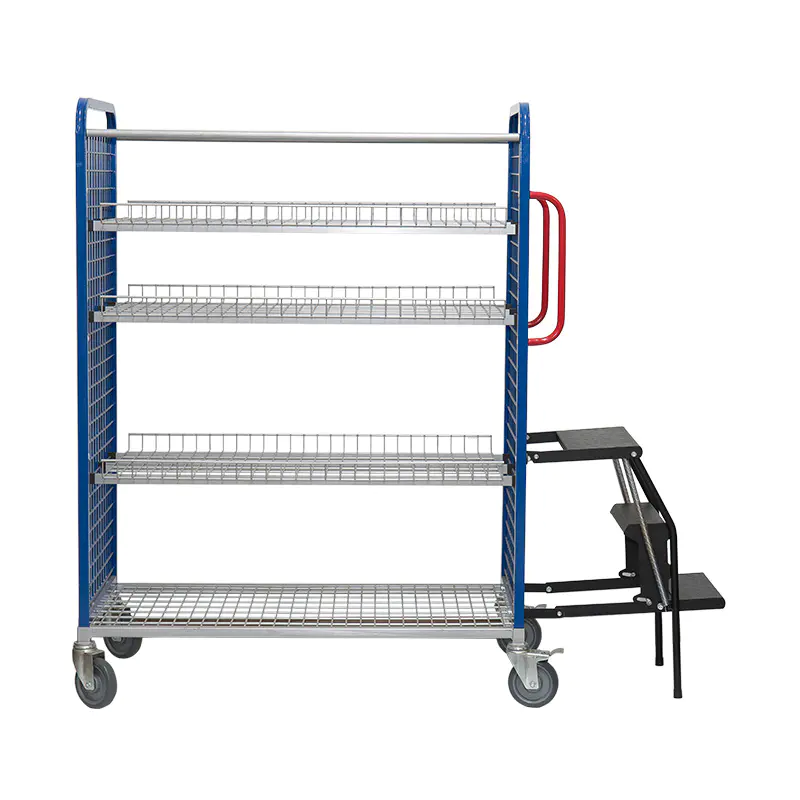
Product specification:This Warehouse wire mesh Multi-Tier Order Picking Trolley adopts a chassis and side panel structur...
See Details -
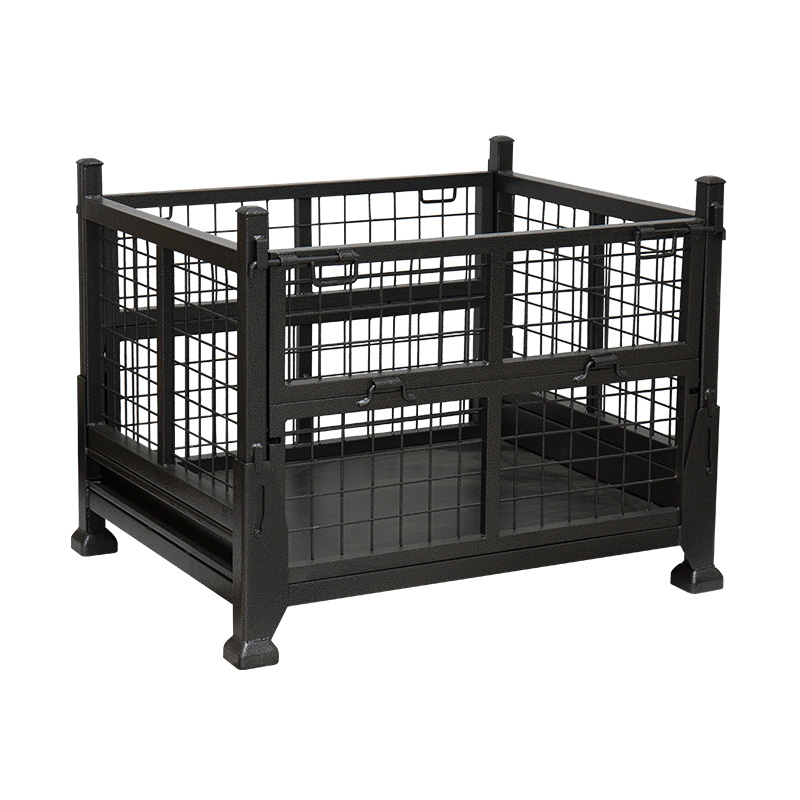
Foldable pallet cages are an important tool in factory logistics. They play an important role in transportation, distrib...
See Details -
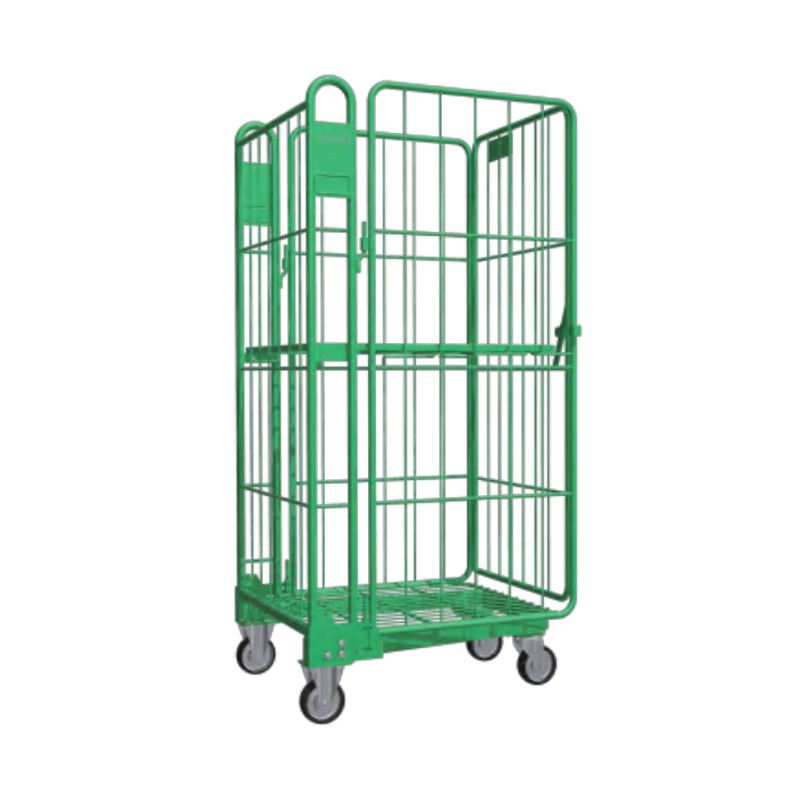
Product specification:The chassis is made of a square tube frame, with a bottom metal sheet tray that can be folded up a...
See Details -
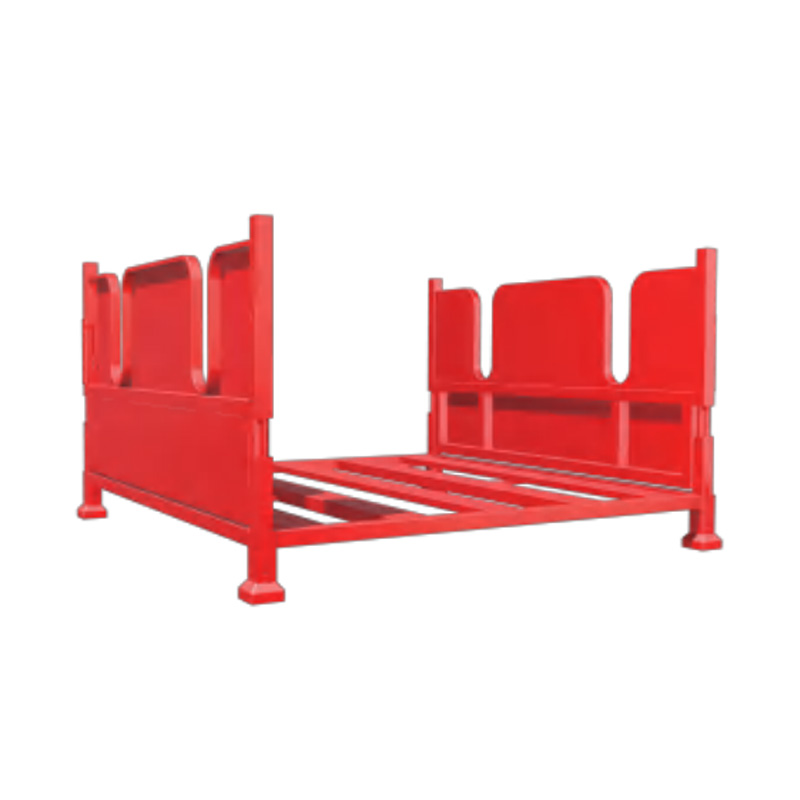
Stacking rack, also known as Qiaogu rack or stacking rackIt is a transportation and storage device derived from pallets ...
See Details -
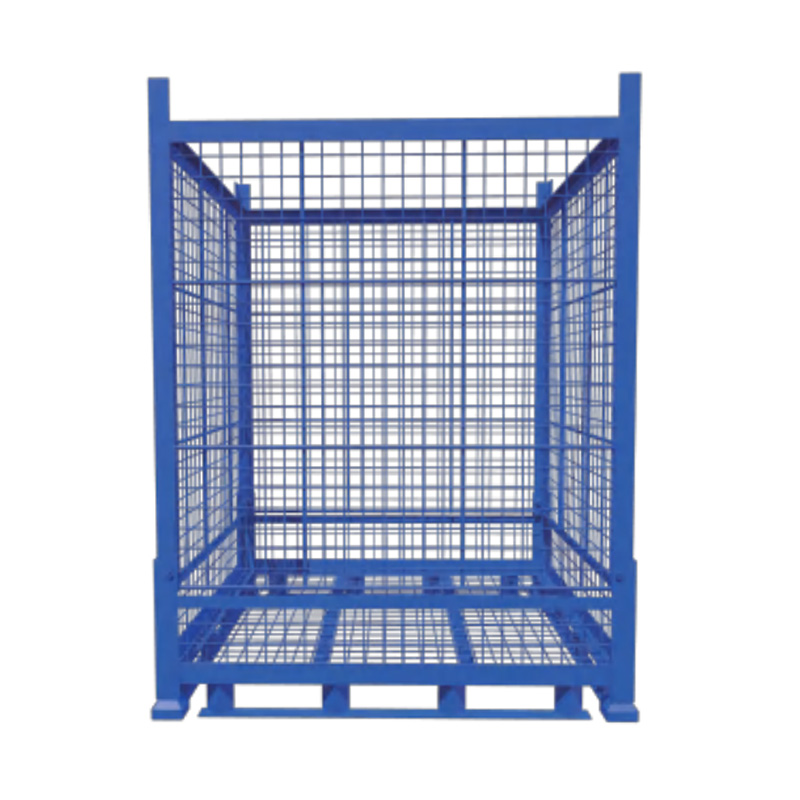
Product specification:Container structure made of L-Type plate frame with 50×50 wire mesh, with base support.Surface tre...
See Details
-
Building B5, No. 138, Weixi Road, Weixi Village, Weitang Town, Xiangcheng District, Suzhou City, China.
-
Tel:
+86-13862140414
+86-13951110334 -
Phone: +86-512-65905480

